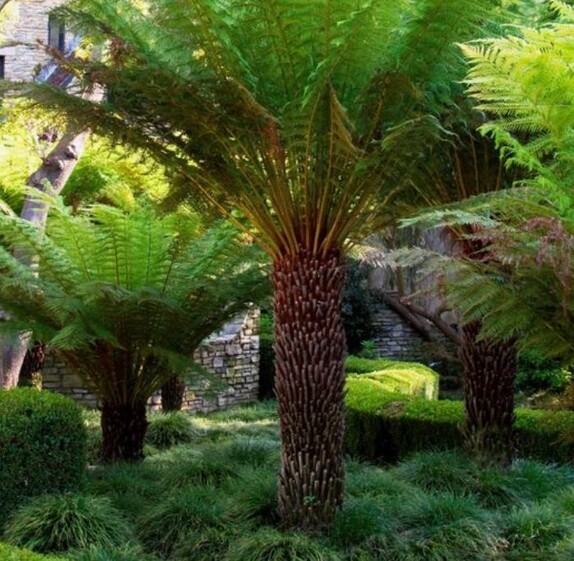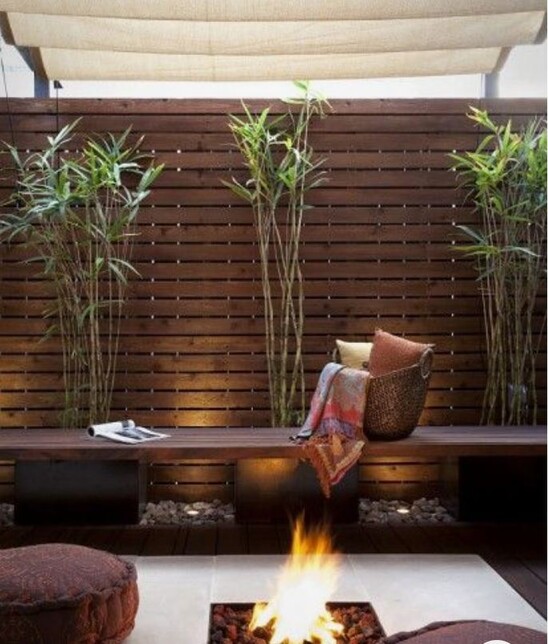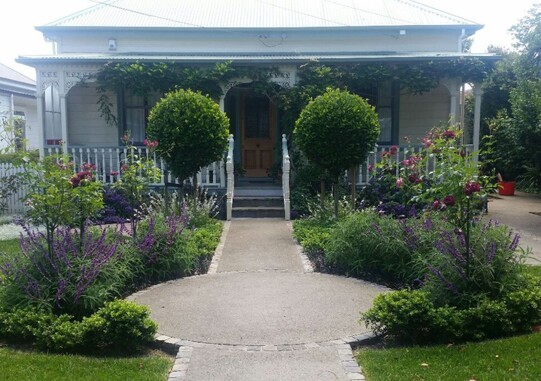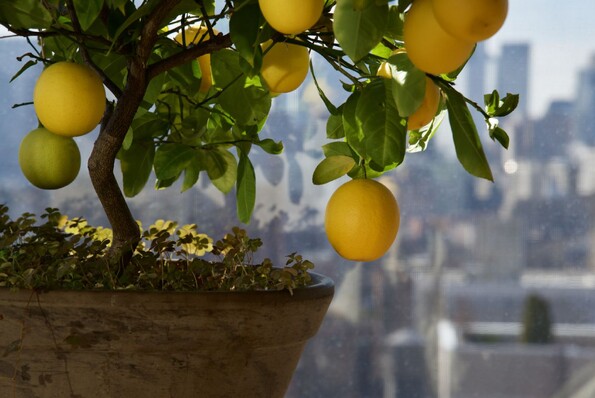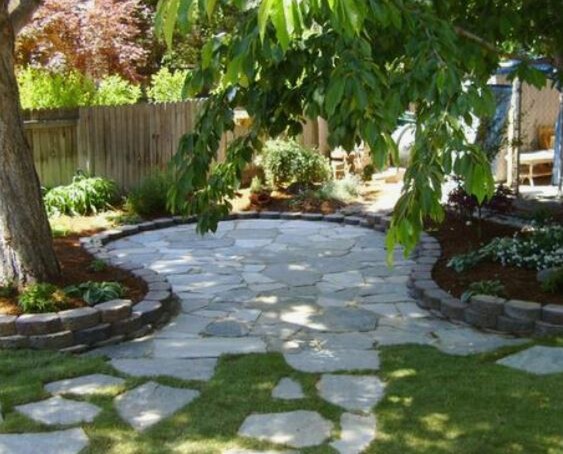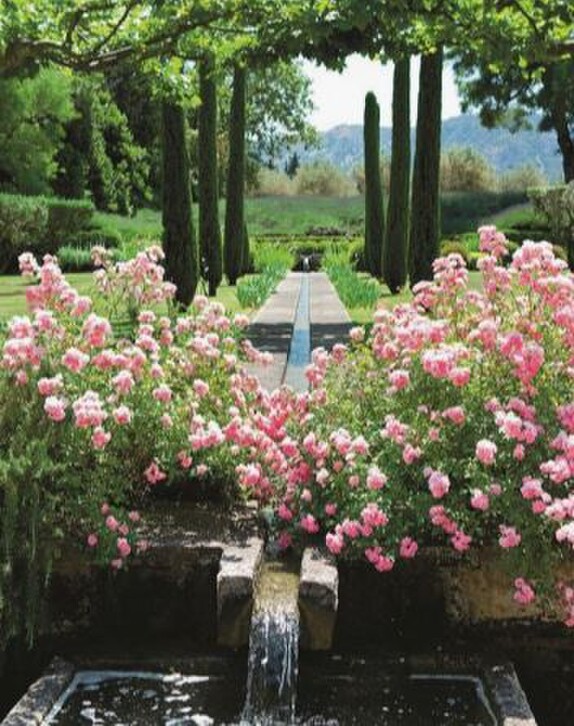How to Add Value to Your Property with Landscaping
Regardless of whether you are landscaping your property for resale or simply to enhance your own enjoyment of your garden, it’s a good idea to think about what adds value.
Despite the differing garden styles, property types and lifestyles of my clients, there are certain elements that are repeatedly requested so if you are looking to invest your hard-earned cash into your garden, the top 7 most requested items might be a good place to start!
DAY 22: # 1 Most requested item – Privacy and screening solutions
In today’s increasingly busy world, our gardens can offer us places of sanctuary and retreat, but not if they are overlooked by neighbours, exposed to busy streets or if they are visually impacted by eyesores.
Fact - Almost everyone I design for wants to either improve privacy in their garden or screen something ugly! Closing in all the boundaries with tall hedging works, however it is a sure way to make your garden feel small and boring. What works best is strategically placed screening and generally this should comprise a mix of both built and planted screening solutions.
- Built solutions, such as fences, walls, trellis and screening panels are fast and give instant impact, proving screening and privacy. These can also establish your garden theme and add visual interest and wow factor. They are great for establishing privacy in key areas like your deck or spa area and screening things at or around eye level.
- Pergolas and overhead structures. *As they are also on the top 7 list, I will go into that later this week.
- Planted solutions : Tall screening is where trees and shrubs come into play. It’s important to choose the right plant for the job, so consider these three things when choosing a plants as screening solutions.
- What is its mature form : Spreading trees work well if you have space and can provide shade. Fastigate or columnar plants in a row (such as Cypress) offer tall screening when space is tight, as do clumping palms. But a tree with a pyramid shape isn’t going to offer much in the way of screening.
- How big will it get : Don’t be fooled by plant labels that give you a 10 year height that sounds perfect. Your plant may well keep growing beyond 10 years point requiring costly maintenance bills, so know its mature height and spread.
- How fast will it grow: While rapid growth is often desirable, this can have long term maintenance implications, especially with hedges. If you are after quick, be sure to choose a species with a mature height that is around the height you need, otherwise you may become a slave to your garden.
These strategically placed element will create privacy and screening, try not to totally close in the boundaries. Use strategic gaps in boundary planting, or even a dip in the hedge, to frame an amazing view or vista beyond your boundaries. Even a short view-line out of your property to a neighbour’s lovely old tree can make your property seem larger and more appealing.
So in short: Creating privacy and screening is a top request for garden design and this is best done with a mix of both instant, built structures and carefully selected screening plants.
DAY 23: #2 most requested item - Low Maintenance and Easy-care Gardens
Low maintenance gardens are second on my list of most commonly requested garden design features. Being time poor is a key driver, however often people will request low maintenance because they have limited gardening skills. When planting your garden, it’s worth considering if you are looking for ‘low maintenance’ or whether an ‘easy-care’ garden could also work.
- Low maintenance gardens are just that. The plants go in and the garden pretty much takes care of itself. This is usually the result of good plant choices and placement, rather than plant super-powers! These gardens tend to have either a naturalised or very pared back look.
- Easy care gardens, on the other hand, require a little more hands-on maintenance however gardening tasks are relatively simple and easy, such as hedge trimming, annual pruning and dead heading. These gardens can offer a little more structure and formality, without becoming a burden.
In both types, NZ native gardens are always a popular choice however still check that your plants will be suitable for your regional climate. While sweeps of colourful carex grasses, libertia and miniature toitoi look and perform amazingly in the southern regions, these plants tend to rot out in the humid northern climates.
Regardless of whether you choose natives or go with exotics, planting in large drifts not only creates more visual impact, it also reduces maintenance with plants mingling happily in their shared space, reducing the need for weeding and pruning.
In my earlier career as a florist I was taught ‘every flower should have its space’ and this is the same for plants in the garden context. Knowing the ultimate size your plant will reach is especially important if you are doing a mixed planting as leaving space for full growth at planting time will reduce the need for constant trimming.
So in short: Low maintenance gardens and easy care plant schemes are commonly requested. Achieve this by planting in drifts or mono-cultures, allowing plenty of space in mixed plantings and by selecting species suitable for your climate.
DAY 24: #3 most requested item - Covered Outdoor Living Spaces
As our love affair with our outdoor living spaces and that all important indoor-outdoor flow continues, improving existing outdoor living spaces and /or creating new ones, is way up at #3 of the most commonly requested garden design features.
Way back on Day 13, I blogged about ‘Making your Outdoor Seating Area More Relaxing and Inviting’. In addition to those tips, here’s a few more things to think about when designing your own outdoor living space :
- Size – A good size for your outdoor living space or deck is 4m x 6m. This is generally enough space for furniture, movement and your BBQ.
- Position - The closer to the house, the more likely you are to use it. If you have no choice but to locate yours away from the house, make sure you include storage for cushions etc so that accessing these is super easy and try to keep it in view of the house so it is inviting.
- Overhead protection – More and more often I am asked to give solutions for shade. Louvered rooves remains incredibly popular and as there has been a recent influx of cost effective and even DIY options, this is now more achievable for those wanting a budget friendly pergola option for their covered outdoor room.
If louvres are still not in your budget don’t despair, there’s a great range of other shade alternatives, many of which have shower-proof fabric options. These can also offer the advantage of enabling your outdoor space to remain open to ‘the big sky’ when not in use:
- Retractable Awning and blinds, which can be fixed to your house or a non-penetrating free-standing structure.
- Cantilever Umbrellas – these can be either wall mounted, ground fixed or movable.
- Shade Umbrellas - Cheap and cheerful, these can add a pop of colour or even a bit of attitude, such as Bali vibe with a thatched shade umbrella or add a touch of whimsy with a beaded, Moroccan style.
Whatever you choose, do watch your placement next to boundaries or in outlook spaces of your house, so as not to infringe on local authority regulations.
So in short: Make your outdoor living space a good size and position it as close to the house as you can or at least within sight of the house. Include overhead cover of some sort to increase appeal and functionality and take care not to infringe on zoning rules when using fixed structures.
DAY 25 – # 4 most requested item - That all important Street Appeal
You knew it was coming and yep, improving street appeal is right up there as the 4th most requested item by people landscaping their properties. In part, street appeal is about creating a welcoming feel so as well as thinking about how your house looks from the street, consider also the journey from street to the front door. Aka ‘the pedestrian arrival route’.
- If your home is beautiful then an open aesthetic such as a low hedge, maybe a tree for overhead interest and a beautiful path flanked by planting that leads straight to the front door is going to be a great starting point.
- If your home is lacking in the looks department, then a hide and reveal technique (as blogged about on Day 20) might be a better way to go. Use a combination of beautiful fine leaf trees, tall shrubs or beautiful walls and feature fences to obscure the house from the street and create an indirect (yet still obvious) route to the front door, such as a curved path through planting, so that the house is not revealed until almost the last moment.
Which ever direction you take, creating a sense of arrival at the front door is an important element. I’m a big fan of creating small entrance courtyards, which can include a seat placed in a tiled or paved area. hardscaped area. Water features and gorgeous feature pots also work well for making a statement at the entrance. If these can be glimpsed from the street, they will further enhance the street appeal of your property.
Use a visually permeable gate or other framing element such as a dip in the hedge or a drop in fence height, which blurs the line between public and private space and gives just a brief, tantalising glimpse of what lies beyond the front boundary. Where you can ‘give back’ to the street with planting at the boundary interface, this will give greater street appeal than an uninviting wall or fence.
So in Short: Use plants or screening to either frame or hide the house, depending on its level of architectural appeal or charm. Even small glimpses into the property at strategic points that don’t impede on your privacy needs will create interest and appeal, as will an inviting pedestrian path and planting that ‘gives back’ to the street.
DAY 26: # 5 Most requested item - Edible Plants
While not everyone wants a large-scale vegetable garden, space for a few edible crops is high up on the garden wish list for most people, so incorporating these in your garden makeover is very forward thinking. So, what exactly is it that we hanker to grow:
- The majority of requests usually come down to just having a space big enough for a spring / summer garden for seasonal crops such as lettuce, tomatoes, peas, cucumber, zucchinis etc. There are lots of great kitset or free-standing planters on the market that make it easy and affordable to create a small seasonal vegetable plot. 2m x 1m x 400mm H is a good size. Tips – position your lettuces for afternoon shade as they have a tendency to ‘bolt’ (go to seed) and always rotate crops seasonally.
- Herbs - These can easily be tucked into your vege planter or mix with flowering plants and place on the deck or patio as close to the kitchen as you are able. Key tips – never plant mint straight into the garden. It’s an aggressive grower and will take over your valuable planting space, restrain it to its own pot. Parsley and coriander prefer a bit of afternoon shade, in full sun they go to seed a lot quicker.
- Fruit trees – Lots of people request a lemon and a lime tree, so if you only have room for a couple of fruiting trees in your garden, these would be my suggestions. Cross pollination with other citrus can cause nearby mandarins to set more pips so ensure a good distance if you plan to plant these as well. Whatever you plant, consider access for pruning, fertilising and harvesting, especially if plan to underplant.
- Fruiting shrub and climbers – Hedges and climbers are other ways to add productive elements to your landscape so consider little cranberry hedges, clipped bay and grapes or passionfruit ornamenting fences.
With all fruiting plants ensure that the ones you choose are suitable for your climate. In the north look for ‘low chill’ cultivars and in the south, ensure adequate growing conditions for those tropical varieties.
So in short: Summer vegetables, herbs and a lemon and lime trees are commonly requested during garden makeovers. Always pick varieties that are suitable for your climate.
*I blogged about ways to design and incorporate productive gardens back in Week 1 - Day 9 : The Kitchen Garden with tips on location, layout and aesthetics, so be sure and read that post too.
DAY 27: # 6 Most requested item - Space for a Trampoline
Trampolines are such a common feature in the New Zealand family garden, that I’ve already written about them twice in this 28 day blog. In Week 2: Day 10, I gave tips on camouflage and integration techniques and then on Day 12, I delved into the location of play areas in general.
Even if you don’t currently have a trampoline to accommodate in your garden, if you plan to sell at some point then future proofing for families can make your property more appealing to buyers, as space for a trampoline ranks at #6 of the most common things to include in your garden when landscaping.
All you really need to do is create a suitably sized open area, around 4-5metres in diameter, with a flat stable base. A lot of great garden design outcomes come from creative solutions to challenging problems, so thinking about this could be the starting point for a fabulous space in your garden. Here’s a few ideas to consider:
- In a flat garden, create a circular pebbled or paved patio away from the house and plant fine foliage trees and soft grasses on the periphery to create a restful nook within your garden that you can use as a secondary, informal seating area, ornamented with easy-care, iron furniture and a few easily relocated pots.
- If your garden is sloped and you plan to create terracing, make one of the terraces a size that would be suitable for a trampoline. Keeping it free of planting it could also create a sun trap just perfect for a couple of sculptural sun loungers.
- Create a tiered lawn and finish one of the levels in artificial turf. There are some great products available these days and this is a great solution for reducing some of that turf maintenance while still having a swathe of verdant green lawn or for getting the ‘lawn’ look in a shady space. Use the synthetic lawn tier to place a free standing hammock and create a nice little getaway beneath the shade or a large tree or palm
- An circular insert of artificial turf into a larger area of lawn can become a practical feature. Use a gorgeous band of brick or cobbles, whichever suits your garden best, to define the change in materials and place some stylish lawn furniture on the artificial turf area. You’ll never have to move the furniture to mow the lawn again.
So in short: Many people request space for a trampoline in their garden design. With a little forward planning and creative thinking, future proofing your garden for families by creating an open space suitable for a trampoline also can offer a great starting point for designing an interesting and practical outdoor space.
DAY 28: # 7 Most requested item - WOW Factor!
28 days of lockdown has gone in a flash for us here at DIYdesign. Wow!
How fitting then, to end this blog with a section on ‘WOW Factor’ which just happens to be the 7th most commonly requested item for existing garden rejuvenation and new gardens alike.
WOW factor is an elusive character though and what encompasses WOW to one person may seem tacky or ghastly to some one else. So rather than thinking of WOW Factor as an ‘item’ that you add to your garden at the end in an effort to turn it into something special, such as a water-feature, garden sculpture or some fabulous garden furniture. These afterthoughts generally look awkward and out of place. Consider instead the concept of ‘The BIg Idea’. This is how professional garden designers create wow factor!
The Big Idea is a key concept that underpins the entire garden design and that links it all together. This can be the starting point of your design or used to unify an existing landscape during a garden makeover. Whatever your starting point, everything else, from hardscape and layout, to planting and ornamentation, comes from and reinforces the Big Idea. It is this cohesion and focus that creates a feeling of fabulousness!
For many gardens the Big Idea is a theme, or garden style such as a sub-tropical or Japanese. For others it is a passion such as plant collecting or is about a creating a feeling, such as sanctuary and seclusion. In some gardens it is a problem that needs to be solved that can provide the Big Idea, so if you have a disjointed garden, garden rooms of different styles, or a secret garden, may be the Big Idea for you.
Whatever your passion, interest or need, use this to create a bold, overriding (or subtle underlying) theme in your garden and THEN, add that cascading waterfall into the corner of your miniature rain forest or your lions head fountain to the ivy glad wall of your rose garden.
If your garden is already established look at it with fresh eyes and you will most likely see it has an underlying idea that you can build upon to create wow factor, or you can work backwards choosing the ornamentation or sculptural piece of your dreams first and design or modify your garden around it so that it is integrated in a manner that feels natural and right.
If all seems lost, create a unifying feature such a quirky path that winds boldly through your eclectic garden providing a strong connecting element, or add a repeat element throughout. such as box hedges, balls or large terracotta pots. Even these small touches can create great impact.
So in short: Just adding a decorative element to your garden won’t create wow factor, unless it is part of an underlying theme. Have a Big Idea for your garden that creates cohesion and a sense of completeness and your garden will amaze and delight.

